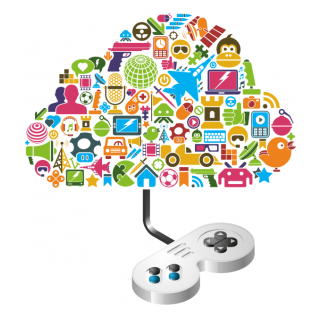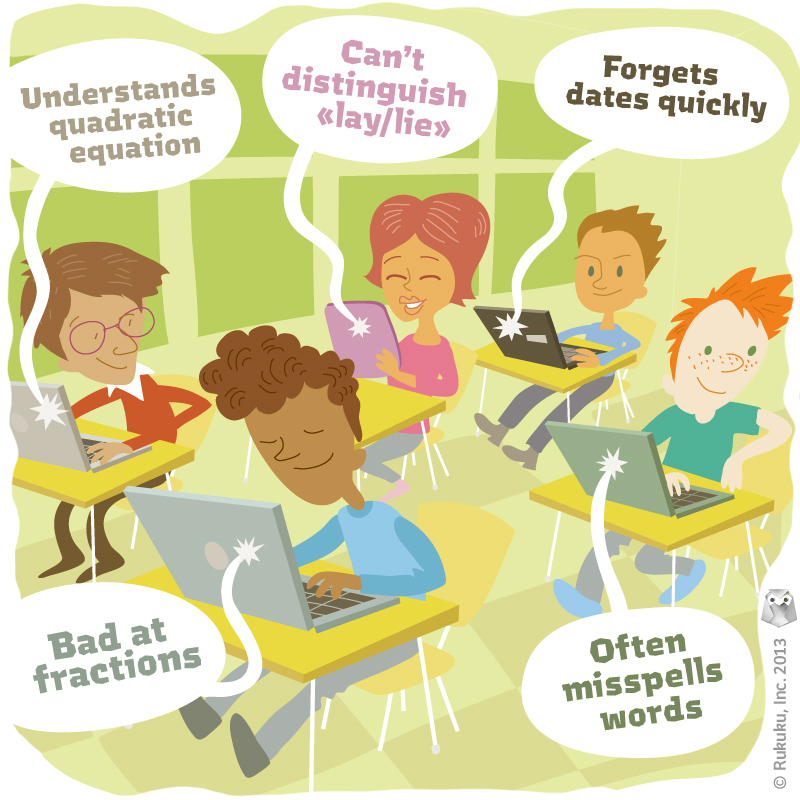 1) Gamification - Gamification in education is able to engage students, foster collaboration, and utilize the brain reactions necessary to make learning more meaningful. By using things like long and short term aims, clear feedback, uncertainty, and collaboration, gamification makes education almost 'addictive'. This idea's effectiveness and correlation with developing technologies will lead to its growing use in classrooms. Students will yearn to gain knowledge through such a fun format.
1) Gamification - Gamification in education is able to engage students, foster collaboration, and utilize the brain reactions necessary to make learning more meaningful. By using things like long and short term aims, clear feedback, uncertainty, and collaboration, gamification makes education almost 'addictive'. This idea's effectiveness and correlation with developing technologies will lead to its growing use in classrooms. Students will yearn to gain knowledge through such a fun format. 2) Device Mesh - In the coming years, students will become more able to communicate, collaborate, and share from device to device. This will lead to students able to create a portfolio of learning. It will also allow teachers to view students work instantaneously and provide quick feedback. Students are able to share and collaborate with each other through backchannels, shared documents, etc. Teachers will be able to digitally share assignments, organize student data, and
2) Device Mesh - In the coming years, students will become more able to communicate, collaborate, and share from device to device. This will lead to students able to create a portfolio of learning. It will also allow teachers to view students work instantaneously and provide quick feedback. Students are able to share and collaborate with each other through backchannels, shared documents, etc. Teachers will be able to digitally share assignments, organize student data, and
other important tasks as devices and programs are
able to work with each other.
3) Personalized Learning - As digital tools and information becomes more readily available over the internet, students are able to learn in a format that they prefer and choose to learn about what interests them. Teachers can identify the learning styles of students and provide opportunities for learning catering to that learning style or they can offer multiple modes of accessing information and displaying mastery. The expansion of online resources has given teachers quite a tool box and given more ownership to students in their learning. I would be hard pressed to find a teacher who doesn't believe that education will improve as students learn more individually in style.
4) Computational Thinking, Coding, Robotics - This movement is highly integrated with the STEAM maker movement which promotes student planning, creation, and problem solving. With this, students are able to make digital creations in various formats, while utilizing their problem solving skills and develop technological literacy. The coding programs that I have heard about in elementary schools are so engaging
and have devices/programs that best suite
all of the different age groups. This movement
will teach students the skill of innovation as their
imagination is truly the limit.
 5) Augmented Reality and Virtual Reality - With A.R. and V.R., students are able to 'go places' that they would never be able to go. They can explore different parts of the world. They can practice skills in an almost digital game type setting. Students can manipulate and access information before their very eyes by using a smart device and AR program. Instead of a teacher lecturing about the parts of a cell, students can see and interact with the parts of a cell through digital representation with embedded audio, video, pictures, etc.
5) Augmented Reality and Virtual Reality - With A.R. and V.R., students are able to 'go places' that they would never be able to go. They can explore different parts of the world. They can practice skills in an almost digital game type setting. Students can manipulate and access information before their very eyes by using a smart device and AR program. Instead of a teacher lecturing about the parts of a cell, students can see and interact with the parts of a cell through digital representation with embedded audio, video, pictures, etc.
6) Data mining - The internet and programs utilizing that internet has led to a wealth of information online. Teachers can now share assignments, multimedia, assessments, and more with each other. I use breakout edu which is a puzzle game geared towards education where students solve knowledge-based riddles to unlock locks and 'break out'. I have made a couple of break outs, but mostly use the ingenious creations of other teachers. In addition, teachers are now able to problem solve and share experiences over the internet. Teachers can work together to either never experience or quickly climb out of pitfalls of education. Through this, teachers are able to
become better than ever for their students. This is especially helpful as,
although students of today and students of the past have plenty of
similarities, students are constantly changing and the produce unique
challenges to teachers that will continue to evolve.


No comments:
Post a Comment